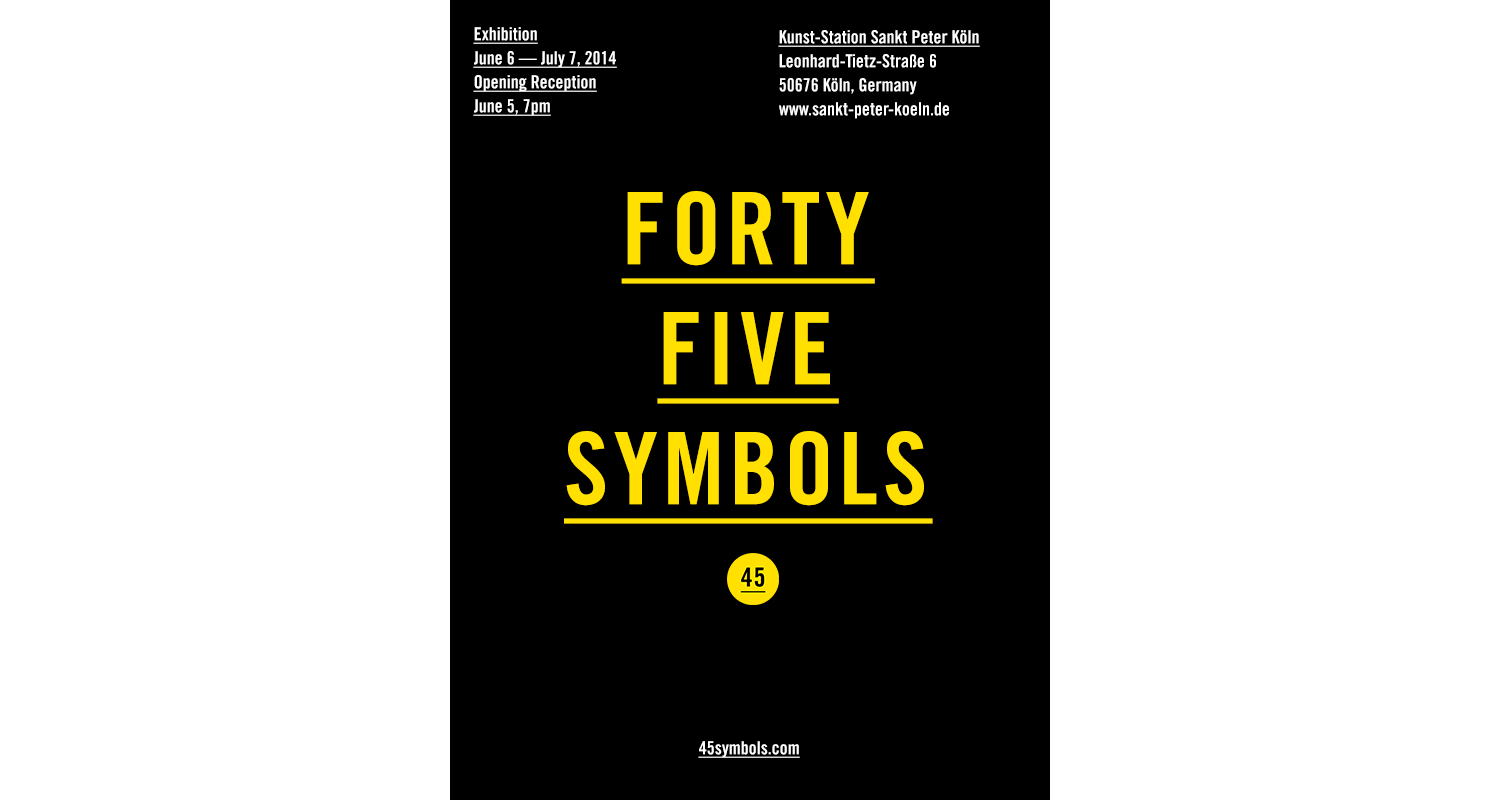45 Symbols Exhibition at Cologne, Germany
The symbols are designed based on Korea’s traditional clothing called Hanbok. This traditional dress features simple lines accented by vibrant colors and patterns. It reflects the custom, ideology, and behavior of ancestral Koreans. The symbols focus on patterns that were printed or handcrafted on Hanbok worn by rulers and aristocrats. They can be divided into five categories of different meaning: nature, plants, animals, geometry, and scripture. This set of symbols is based on plants, geometry and scripture to showcase the beauty and ideology of Korea.
Disciplined
Installation
Physical Computing
Professor
Pascal Glissmann
Location
Kunst-Station Sankt Peter
45 Symbols
Symbols — Hanbok, Korea’s traditional clothing
The design symbols are specifically focused on patterns used by the royalty. The patterns can be divided into five categories, Nature, Plant, Animal, Geometric and Text. Each category has different meaning. Plant, Geometric and Text are the base of my symbols. I hope this could be an opportunity to showcase the beauty and ideology of Korea.
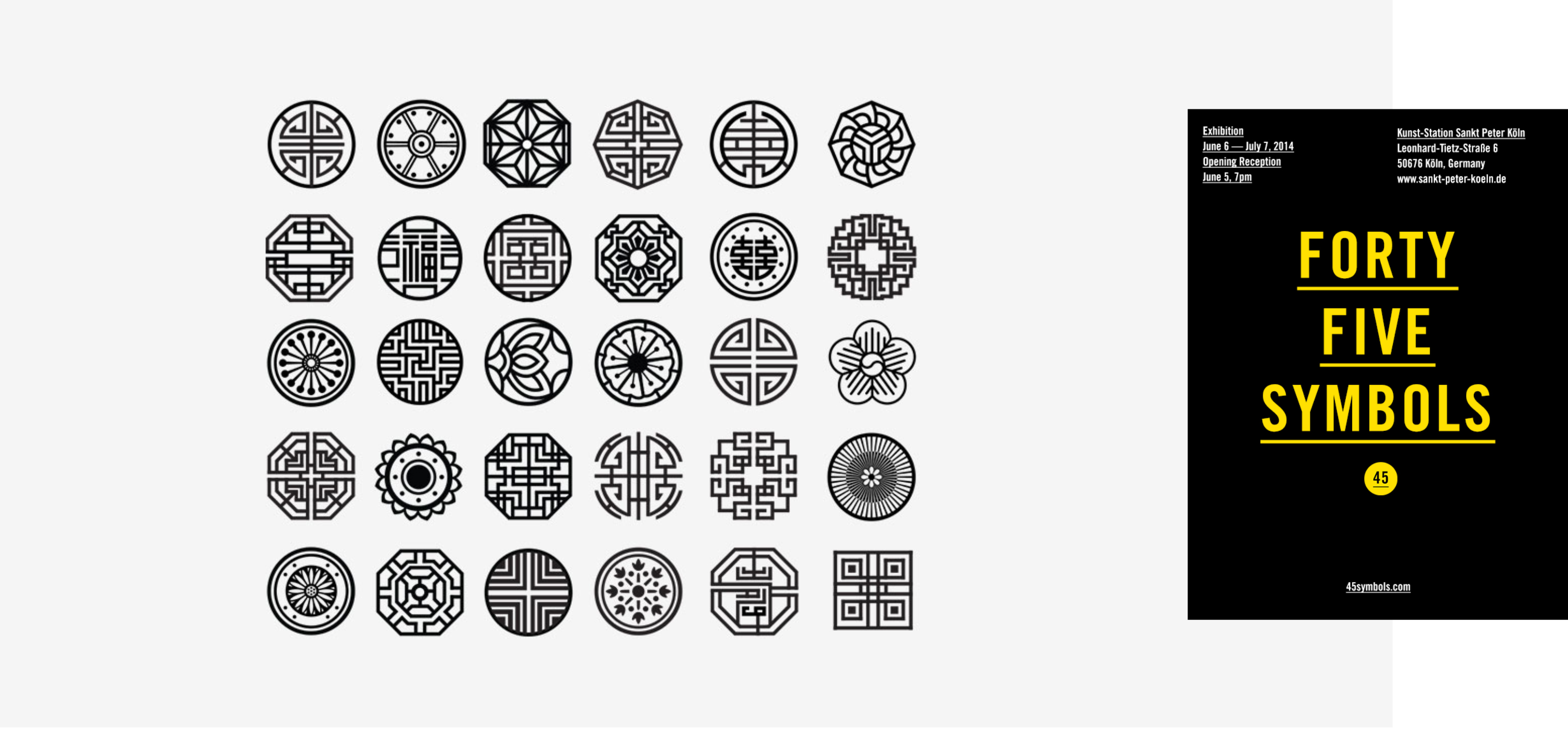
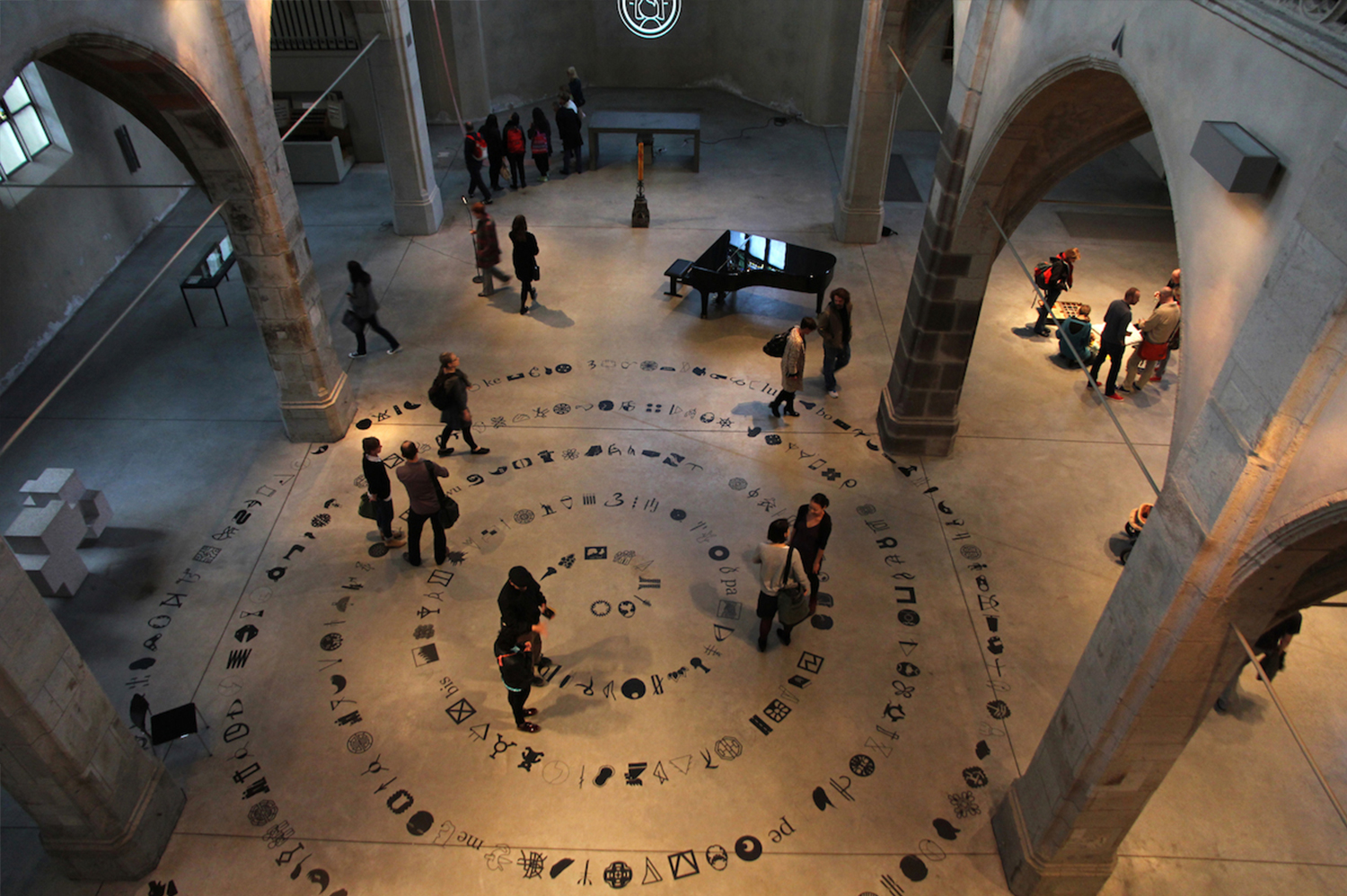
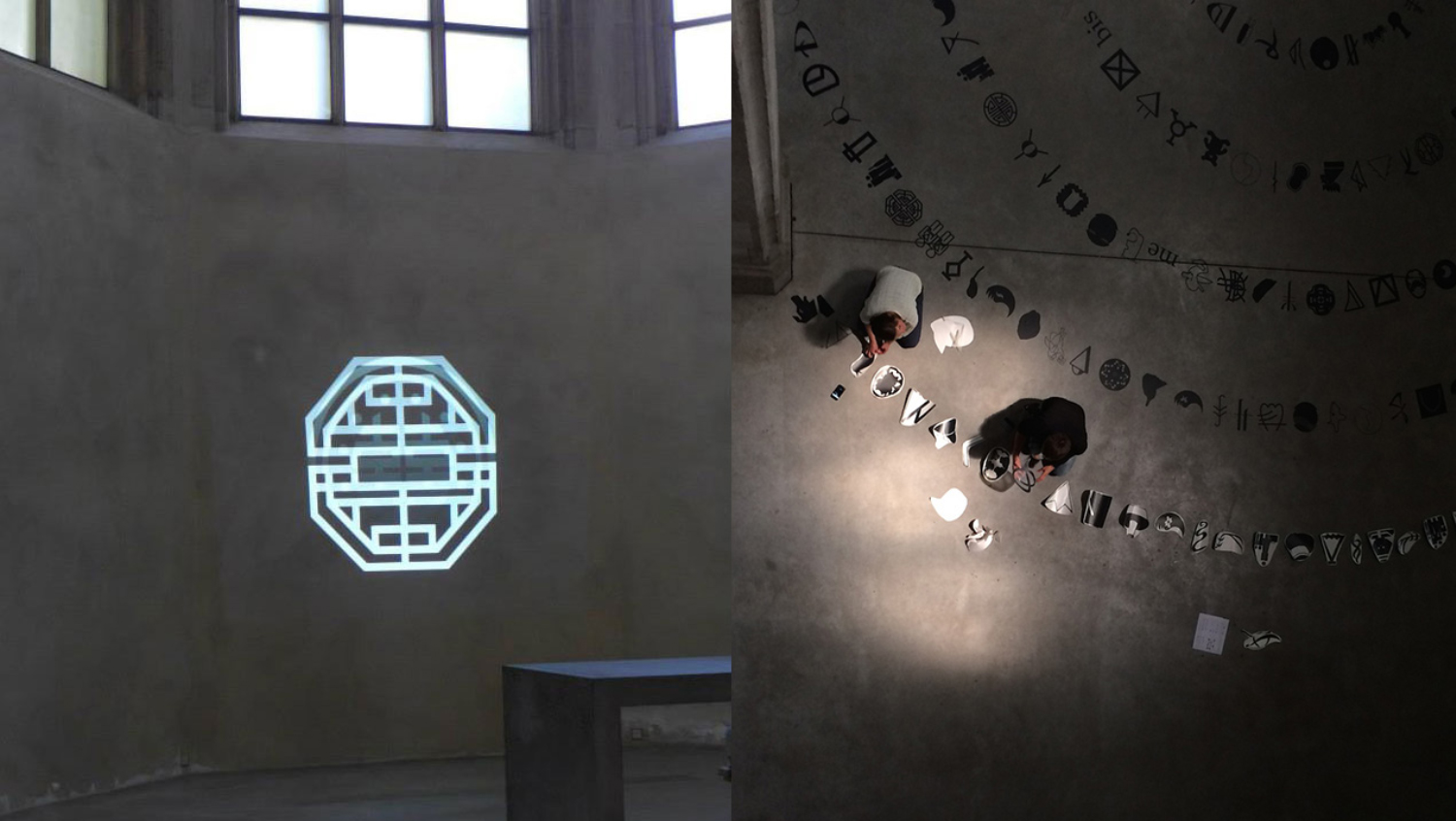
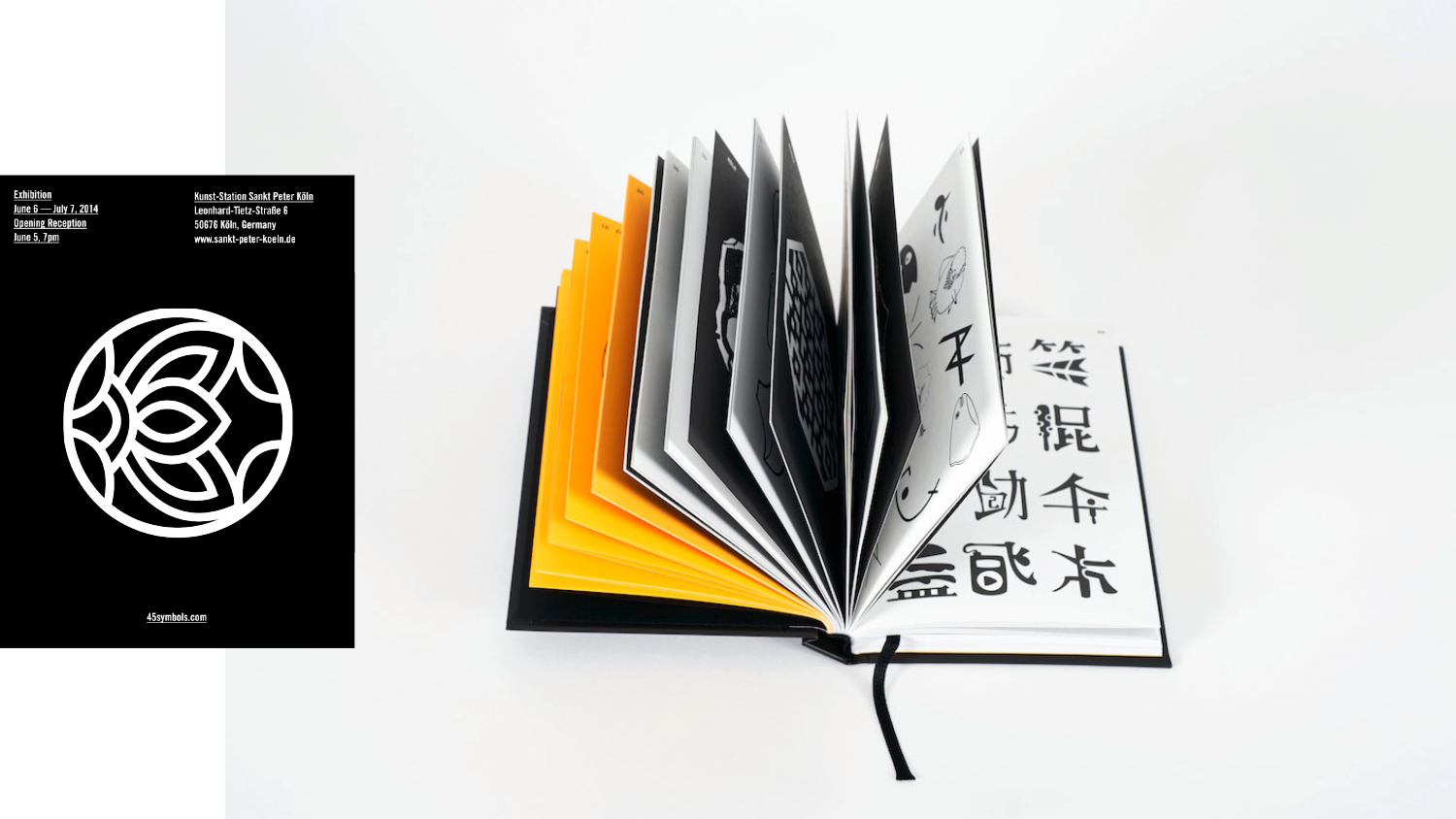
What is your truth? What is your message, narrative, or statement that you would like to preserve for future generations?
Exhibition — The Phaistos Project
The Phaistos Disc, which was discovered in 1908 and is thought to date to around 1700 BC, is a circular piece of fired clay stamped with forty-five distinct symbols. This code is still unresolved. It inspires the participants of The Phaistos Project — Forty-five Symbols to translate current concerns — political, economic, ecological, cultural, or social challenges — into collections of forty-five unique symbols. Design methodologies are used as a mode of inquiry to develop ethnographic visual narratives that are subjective, stimulating, and capture visual traces of the anthropocene.

Two discs — both are devices of media technology; both have inscribed spiral information; and both capture our fascination beyond their materiality. One of them was found one hundred years ago underneath layers of soil below the surface of our planet. The other one was sent away from this earth fifty years ago. “It is currently traveling into interstellar space, the region between stars where the galactic plasma is present, and is the farthest human made object from Earth”. (NASA, 2013)
